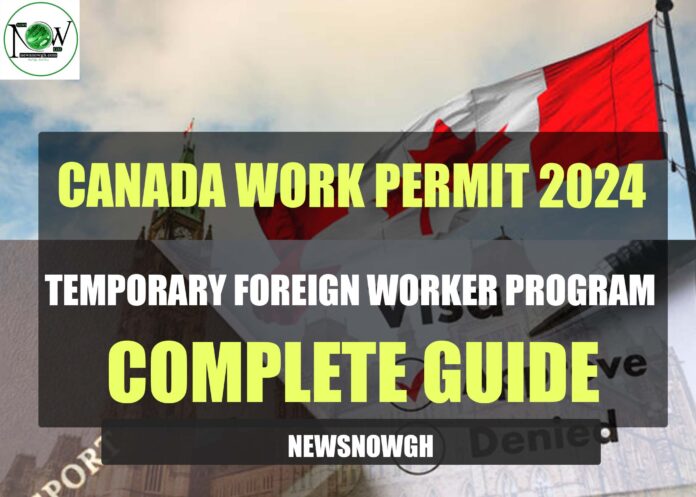Canada Work Permit 2024: Temporary Foreign Worker Program – Complete Guide
Significant changes have been made to Canada’s Temporary Foreign Worker Program (TFWP). By making these adjustments, Canadian firms will be able to hire foreign workers with a work visa provided they receive a favorable Labor Market Impact Assessment (LMIA).
The new regulations guarantee a fair recruiting procedure and give Canadian workers priority over other candidates for open positions. Let’s take a closer look at these adjustments.
What is an LMIA?
Employment and Social Development Canada (ESDC) uses this procedure to assess if an employer needs to engage a foreign worker. If the LMIA comes back positive, it means that no Canadian candidate meets the requirements for the position, so the business can choose to hire a foreign worker.
Why Have Things Changed?
The modifications were made in reaction to how Canada’s labor market was changing. The rate of unemployment is increasing, and job openings are no longer at all-time highs. The unemployment rate rose by 0.3% from the previous month to 6.1% in March 2024. To mitigate this issue, the Canadian government has adjusted the TFWP to only utilize it in situations where no Canadians are qualified for the position.
Key Changes Effective in 2024
- LMIA Validity Period: New LMIAs now only have a six-month validity duration instead of a 12-month one. Employers now have just six months from the date of hire to file for a foreign worker’s work permit.
- Workforce Percentage for Low Wage Stream: The majority of industries are required to decrease the proportion of their workforce that receives low wages from 30% to 20%. Nevertheless, the construction and healthcare sectors remain unaffected by this change.
- Hiring Asylum Seekers: Now, employers have to think about recruiting asylum seekers who have legitimate work permits. Employers used to merely have to demonstrate that they were making an effort to hire citizens or permanent residents of Canada.
- Employer Salary Assessments for Temporary Foreign Workers: Every year, employers are required to review and revise the wages for temporary foreign workers. This guarantees that employees receive just compensation based on the going rates for their position and area.
Changes to Canada Work Permit LMIA
The Road Map for Workforce Solutions
To solve workforce shortages, the Workforce Solutions Road Map concentrates on seven important industries. Among these sectors are:
- Wood Product Manufacturing (NAICS 321)
- Food Manufacturing (NAICS 311)
- Accommodation and Food Services (NAICS 72)
- Furniture and Related Product Manufacturing (NAICS 337)
- Nursing and Residential Care Facilities (NAICS 623)
- Hospitals (NAICS 622)
- Construction (NAICS 23)
Temporary Foreign Worker Program (TFWP)
When there are no suitable Canadian candidates for a position, employers in Canada are permitted by the TFWP to engage foreign workers. By implementing this approach, it is ensured that foreign workers are hired only when necessary and that the Canadian labor market stays robust.
Jobs Available Right Now in Canada
In Canada, there were 632,100 open positions as of January 2024. Compared to the record high of 983,600 job openings in the second quarter of 2022, this is a decline. Before using foreign labor, the government expects that the proposed adjustments will assist in filling these positions with skilled Canadian workers.
Getting Used to New Regulations
The purpose of these modifications is to guarantee proper TFWP implementation and give Canadians priority for open positions. For employers to effectively hire foreign labor, they must adjust to these new regulations. Employers can meet their workforce needs and promote fair labor markets by adhering to the new criteria.
Conclusion
To provide a fair and equitable labor market, the Canada Work Permit LMIA has undergone revisions. The Canadian government intends to solve the current labor market issues by giving priority to Canadian workers and making sure temporary foreign workers receive fair compensation. For employers to successfully navigate the TFWP and hire the staff they need, they must remain educated about these changes.
Follow us on Newsnowgh.com to stay updated on the latest information regarding work permits, visa application processes, paths to permanent residency, and visa-sponsored employment.


